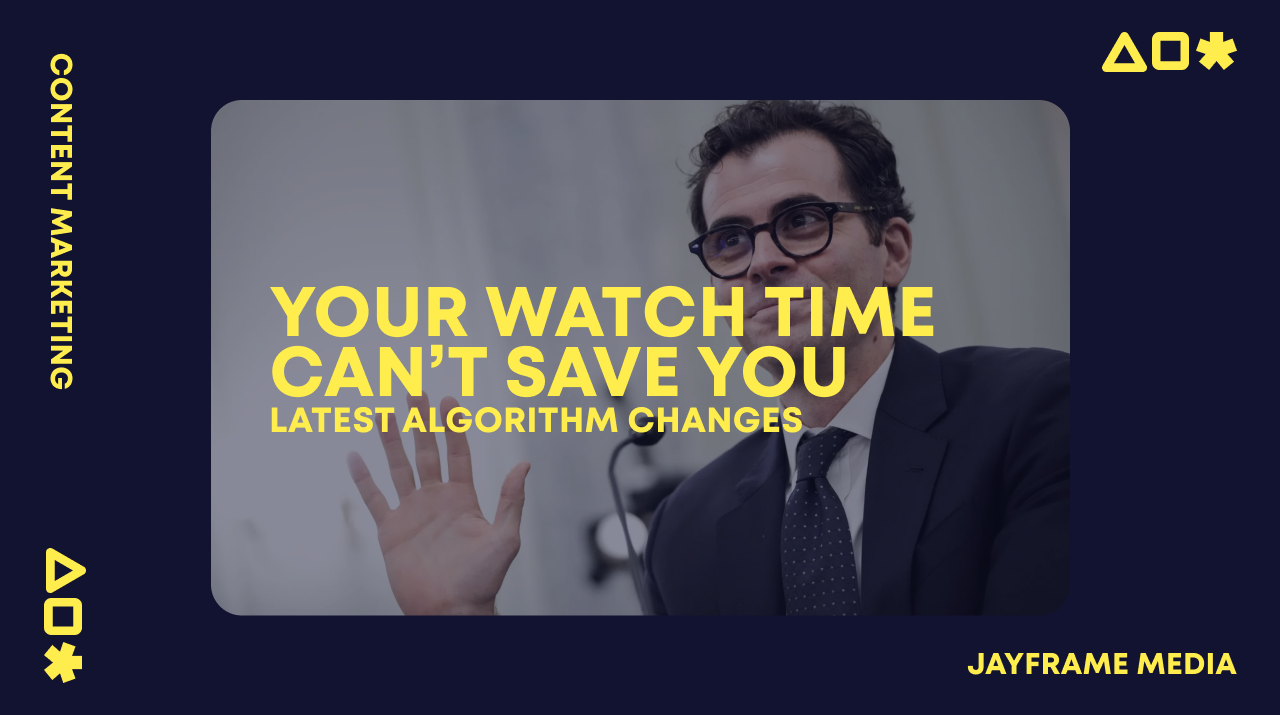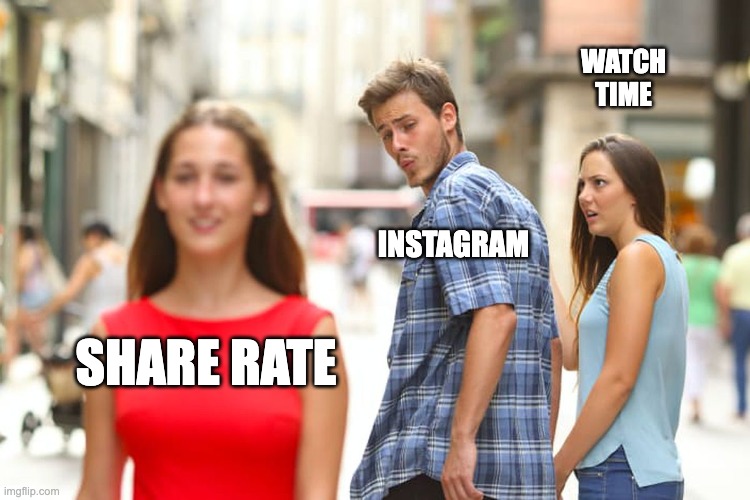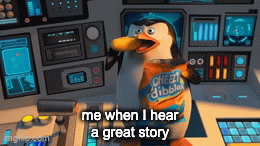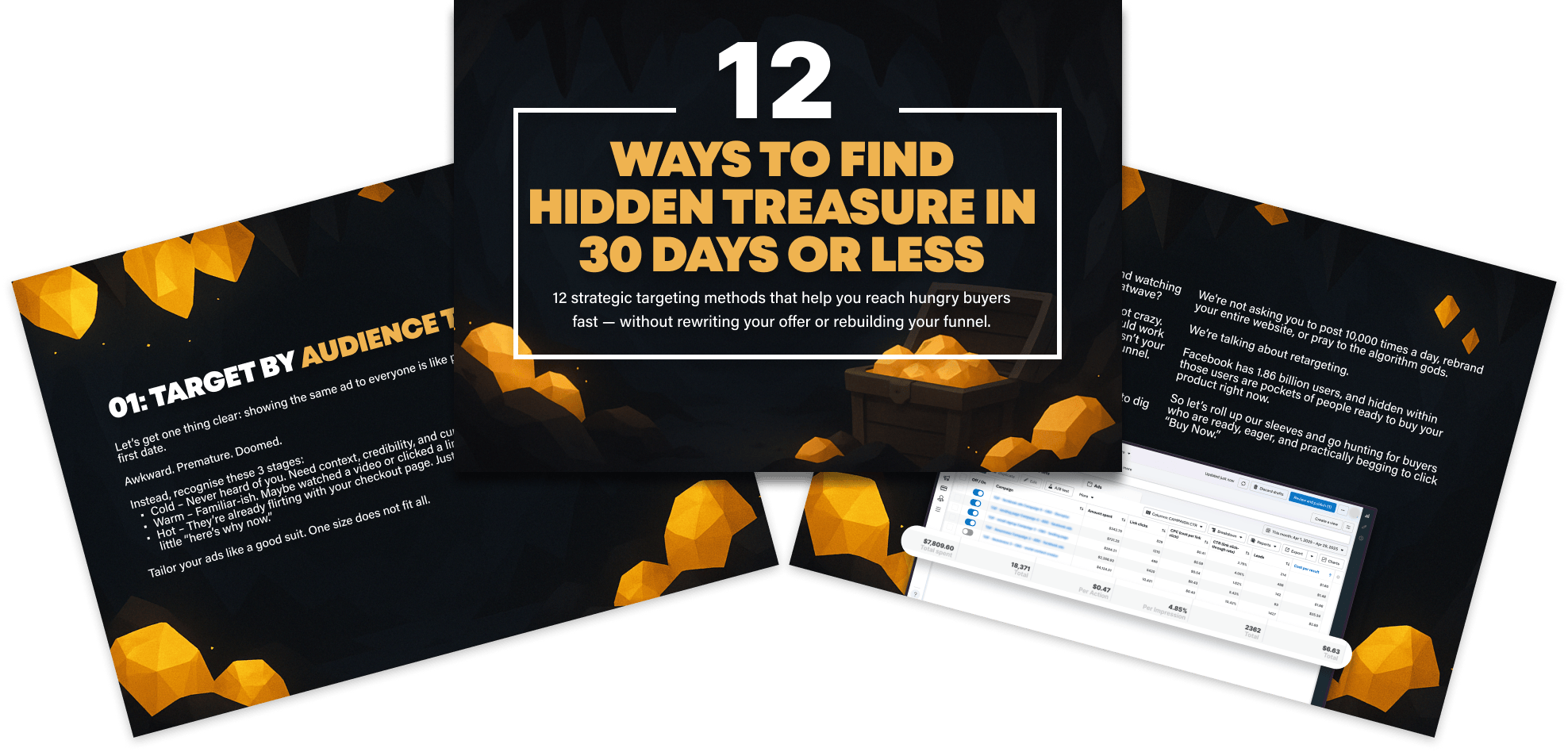They Don't Care About Your Watch Time
Jayframe Media | Content MarketingJust when we thought we had it all figured out – he went and changed the game.
Recently, Instagram’s chief noted a shift in its focus to prioritising shares over watch time as the top engagement metric. Understanding this change can help you create more effective content and boost your visibility on the platform. So what does this mean, moving forward?


Instagram’s CEO, Adam Mosseri, announced that shares are now super important. They’re looking at shares as a huge engagement metric.
You’re probably thinking, “Shares? Really?” Yup, shares.
Let me explain.
When people end up sharing your content, it tells Instagram that it’s valuable and worth spreading around. It used to be primarily the watch time that got instagram’s algo throbbing but seems they’ve got eyes on a new little red dress. That’s shares… if you didn’t catch my drift.
Which makes sense. Think about it—any one can share a video, image, or carousel. But the thing about shares is, the content is sent directly to someone who is more likely to resonate with, find value and engage your other content then someone who simply stumbled across your post in their daily doom scroll. It’s not to say that the other metrics don’t matter though. Rather, it’s that the platform will be prioritising shared content over other content and meaning your reach could be set to plummet.
I suspect the algorithm’s priorities are now ranked in this order:
- Share rates
- Watch time
- Comment rates
- Like rates
Which you can see are ranked in order of high-intention engagement, to low-intention engagement.


Here’s what I’ve found
The thing is, it’s not always the super polished, professional-looking stuff that get’s shared. Nope, it’s the raw, behind-the-scenes shorts that are most likely to get me to save and share a piece of content, or at the very least, watch all the way through.
So… I asked myself. what was it that kept me watching? What was it about that video, that made me want to share it a friend?
The video that i’m referring to was one from a creator I follow. This particular video showed him doing daily tasks in his office – nothing special. There were no fancy camera angles, it was a static shot from a couple of different angles, locked off on a tripod – super simple. No fancy edits, and sprinkled throughout, was a storyline about how he had overcome a design challenge over the years of working on his craft. It was interesting. Insightful. And it kept me watching.
As a side note here–it has always been the content the tells great stories that wind up with the best performance.
So the video wasn’t rehearsed. It wasn’t scripted. It certainly wasn’t perfect. But even still, I found it valuable, entertaining and insightful.
So I shared it with a friend.
It lead to conversation about how we do edit. How we deal with the ever increasing storage needs. How we think about filming interviews. Ultimately, it lead me to consider a new perspective. Now was all of our conversation sparked by the video I had shared? No, not all of it. But it certainly got the ball rolling.
So what are the content types that I am most likely to share with others.
For me… I know I am very focused on education–I’m always looking for ways that I can learn. So naturally, I will tend to find myself consuming that kind of content. If I look at the people I personally follow… it’s pretty obvious that is the case. But overall, what are the types of content that get’s the most shares?
“DOGS” I hear you shouting…
Yes of course–dogs and other cute animals, things that kids do, people slipping on ice… all the typical eye catchers have always outplayed other content, and personally, they are often the things i share too… don’t lie, I know you’re in the same boat!
But looking more broadly, typically there are four (4) main categories of content that performs well. And once you hear it, you’ll know it’s true, because you stay up late at night, scrolling through this kind of content all the time.


Those categories are:
Entertainment
Educational
Inspirational Stories
Visual Storytelling
Let me explain.
Entertainment:
This is anything that’s funny or intriguing. They catch attention and make people want to share them with friends. What does that look like? Well, you’ve got reaction videos, popular tv show quotes, standup comedy, behind-the-scenes, UGC, skits, asking strangers questions, podcasts, and in a surprising way–singer/songwriters and artist who are focusing on social to get their start. There are endless examples of these types of creators.Some creators that come to mind: you can check them out later
Most known bands and artists have big followings, but some artists who are intentionally making great content for socials are being discovered on the global platform because of it:
Educational Content:
This is the informative stuff. Things like tutorials, ‘talking head’ videos sharing something you realised that others might not, and ‘hot take’ content where you respond to something happening in the news, local areas, or within specific companies are great for this. You’ve got podcasts, talk shows and creators that teach how to do something specific.Have you ever heard the term ‘show, don’t tell’? – that’s exactly what this type of content does.
Informative posts that teach something new are super shareable. People love to learn, especially when it’s something that can help them. This type of content lends itself well to ‘positioning yourself as an expert’.
I put that in brackets because “everyone’s an expert”. But if you’ve got knowledge that can help others; you should share it! Sharing knowledge builds trust and if everyone else in your industry is sharing their 2 cents; then you had better start sharing also.
Think about the last time you learned a neat trick or discovered a useful piece of information—weren’t you excited to finally understand?
Educational content should be clear, concise, and genuinely useful.
For instance, if you’re in the tech industry, a step-by-step guide on how to troubleshoot common issues can be very valuable.
If you’re in fitness, showing proper form and how to perform specific exercises correctly can help your viewer improve their workouts and health. You can also help them avoid hurting themselves during workouts because of this.
The key here is to provide value. When your audience feels like they’ve learned something new and useful, they’re more likely to share it with their network.
Storytelling:
Inspirational stories are all about telling great stories that resonate. Instead of just throwing out motivational quotes or success stories, focus on crafting narratives that connect with your audience’s values and experiences. Share stories that are relatable to where they are at right now.
Here’s how to tell a great inspirational story:
- Start with a Relatable Hero: Your story should have a protagonist that your audience can relate to. This could be a customer, a team member, a parent, or even themselves.
- Show the Struggle: Great stories often involve overcoming challenges. Don’t shy away from sharing the obstacles your hero faced. This makes the eventual success more meaningful. Things like common challenges, outcomes people want to avoid, fear, anxiety, and perhaps even a misconception.
- Highlight the Transformation: What changed for the hero? This could be a shift in mindset, a major achievement, or a significant life change. The transformation is where the inspiration lies.
- Keep it Authentic: Authenticity is key. Make sure your story is genuine and relatable. People are inspired by real stories that show vulnerability and growth.
For example, you might tell the story of a small business owner who, against all odds, managed to turn their business around through perseverance and innovative thinking. Or share a story about a customer whose life was positively impacted by your product or service. These stories not only inspire but also demonstrate the real-world value of what you offer. It doesn’t have to be wildly inspirational. It could be as simple as revealing a problem you struggled with, sharing the reveelation, and showing the positive outcome.
- Problem
- Revelation
- Outcome
There are many frameworks for telling great stories, so you don’t need to lock yourself into any single one. Switch it up.


Visual Storytelling:
High-quality photos and visually appealing graphics that tell a story can really captivate your audience and encourage shares. In a world where we are bombarded with information, visuals can quickly convey a message in a way that’s easy to digest and remember.
Visual storytelling can be powerful because it combines the old adage “a picture is worth a thousand words” with the narrative techniques of storytelling. Here’s how to make your visual content stand out:
- Use strong, high-quality content: Ensure your photos and videos are clear, shot in great light, and have good sound. A Poor-quality image, especially lousy sound, can detract from your message.
- Tell a Story: Each image or video should contribute to a larger narrative. If you talk about it, you should try and find a way to show it as well. Storytelling doesn’t just mean what’s being spoken or read. Half of all communication is non-verbal. So appeal to the senses. Sight, smell, sound, touch–you get the picture.
- Be Consistent with Your Brand: Use colors, fonts, and styles that align with your brand identity. Consistency helps build brand recognition and trust.
Takeaway
So, the big takeaway here? Focus on creating content that people will want to share. Shared content not only reaches more people but also tells Instagram that your stuff is valuable, boosting your visibility even more.
Final Note
Remember, shares amplify your message and increase visibility on social media. But if your focus should be on making great content, if it’s not good, no one will watch it.
In the world of social media, the more your content is shared, the more successful it becomes. Got it? Great!
Now go do create something.
